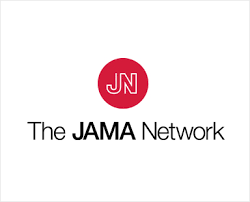Study: Excessive nurse overtime, agency staffing harm patients

Editor's Note Overreliance on overtime and agency nurse staffing can significantly increase the risk of pressure ulcers and, in the case of agency hours, perioperative hemorrhage or hematoma, according to research published April 2 in JAMA Network Open. Using data from 70 US hospitals between 2019 and 2022, researchers…
Takeaways and lessons learned from OR Manager Conference
After more than a year in hiatus, OR Manager Conference was held in October 2021 in Chicago, bringing together hundreds of attendees, speakers, and exhibitors. After the live conference, OR Manager sat down with Cindy Kildgore, education coordinator for the OR Manager Conference; Amy Bethel, education coordinator for the OR…
Joint Commission conducting both virtual and onsite surveys in 2021
The Joint Commission stopped doing most onsite surveys and reviews from March 16 to May 31, 2020, in response to the COVID-19 pandemic. During that time, they developed processes for conducting offsite or virtual events, and as of mid-December, more than 1,200 offsite surveys and reviews had been conducted across…
ACS NSQIP risk calculator predicts four outcomes for geriatric surgical patients
Editor's Note The American College of Surgeons National Surgical Quality Improvement Program (ACS NSQIP) Surgical Risk Calculator accurately predicted four quality-of-life outcomes that transcend traditional measures of successful surgery and now reflects the expected effects of surgery on an older patient’s ability to function independently, finds this study presented October…
Say goodbye to skin injuries in surgical patients
Hospital-acquired pressure injuries (HAPIs) fall under the care management serious event category, and the literature suggests the incidence of a pressure injury following surgery or a procedure may contribute to more than half of all hospital-related skin injuries. Furthermore, the Centers for Medicare & Medicaid Services (CMS) has defined numerous…
Munro Scale assessment helps reduce HAPI rates
Each year, more than 2.5 million adults in the US develop pressure ulcers, according to the Agency for Healthcare Research and Quality (AHRQ). These lesions bring pain, risk for serious infection, and increased healthcare utilization. Data on the costs of treatment vary, but some estimates range between $37,800 and $70,000…
Success in efforts to prevent HAPUs may depend on data sources
Editor's Note Transitioning from administrative data to chart-based surveillance review to measure hospital-acquired pressure ulcers (HAPUs) and accounting for HAPU severity could improve the validity of measures for assessing the clinical and financial impact of value-based purchasing interventions, this study finds. Assessing HAPU incidence, severity, and trends using administrative data…
Intraoperative positioning education fills knowledge void in care unit nurses
Can experience in the OR improve patient care in the postsurgical inpatient setting? Beginning last year, the OR at Temple University Hospital, Philadelphia, started its first Periop 101 program and trained six nurses from postsurgical care units to be perioperative nurses. During the program, the former care unit nurses found…
Joint Commission: Center announces project to reduce hospital-acquired pressure injuries
Editor's Note The Joint Commission Center for Transforming Healthcare is collaborating with the Johns Hopkins, Kaiser Permanente South Sacramento, and Memorial Hermann Southeast Hospitals to identify root causes of and solutions for reducing rates of hospital-acquired pressure ulcers and injuries. Following completion of the “Reducing hospital-acquired pressure injuries” project in…
Munro Scale research supports streamlining risk levels
The Munro Pressure Ulcer Risk Assessment Scale for Perioperative Patients© (Munro Scale) has made great strides in the past year. The tool, which assesses patients’ risk levels at each phase of surgery (preoperative, intraoperative, and postoperative), is available from AORN. Cassendra Munro, MSN, RN, CNOR, developed the Munro Scale and…

 Free Daily News
Free Daily News